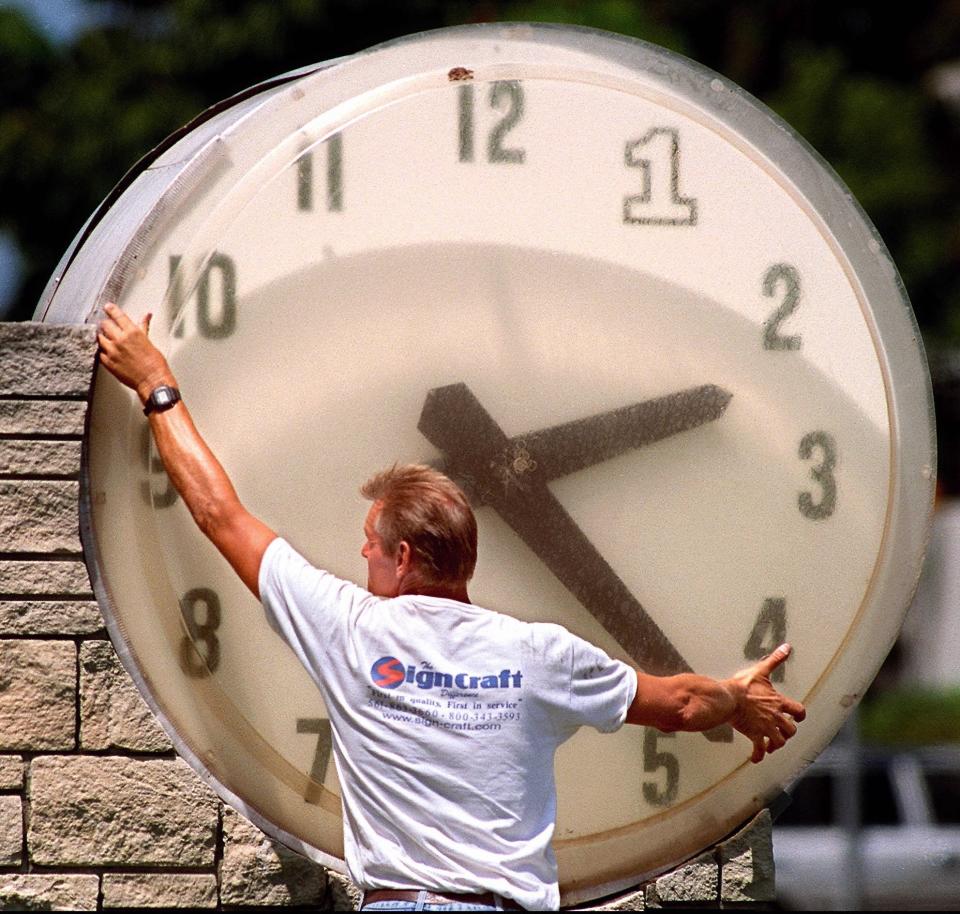Daylight saving time: 10 interesting facts on why we set clocks one hour ahead of standard time
Why do we do the daylight saving ritual, and how did it get started?
Was daylight saving time created for farming? Daylight saving time was not created to help farmers. According to Michael Downing, who wrote the book "Spring Forward, The Annual Madness of Daylight Saving Time", farmers opposed the time change that turned clocks one hour forward because they needed the sun to dry the dew off crops before they could be picked and taken to market. Also, cows needed to be milked every 12 hours and turning the clock ahead just meant they had to get up even earlier to do the milking.
Here are more surprising facts about daylight saving time that you might not know.
1. It’s daylight saving time, not daylight savings time.
The U.S. Senate passed the Sunshine Protection Act to make daylight saving time permanent. Proponents of a permanent daylight saving time say it will do everything from reduce childhood obesity and crime to improve the economy. But it would also mean sunrises from mid-December through January wouldn't happen until after 8 a.m. The House of Representatives has not voted on the bill.
2. When did daylight saving time start?
Benjamin Franklin did not invent daylight saving time. Although Franklin opined on the concept of daylight saving time, it was first instituted by Germany on May 1, 1916 in an effort to conserve fuel during World War I. A 2016 Congressional Research Service report says the time change wasn’t adopted in the U.S. until 1918 with the bill “An Act to preserve daylight and provide standard time for the United States.”
3. What happened to daylight saving time in 1942?

Daylight saving time was a hotly contested idea and was abolished after World War I in the U.S. It became a state option until 1942 when President Franklin Roosevelt instituted “War Time”, which was year-round daylight saving time. That ended after the war and for many years, cities and counties were allowed to make their own decisions on daylight saving time. That meant several towns in the same state could be on different schedules.
4. What happened to daylight saving time in 1966?
In 1966, Congress approved the Uniform Time Act, which included a requirement that clocks be set ahead one hour beginning at 2 a.m. on the last Sunday in April and turned back one hour at 2 a.m. on the last Sunday in October. States were allowed to exempt themselves from the requirement as long as the entire state did so.
5. Which states stay standard time?
Arizona, Hawaii, Puerto Rico and the U.S. Virgin Islands stay on standard time year round.
6. How long does daylight saving time last?
The Energy Policy Act of 2005 changed the beginning of daylight saving time to the second Sunday in March with the ending date being the first Sunday in November. The extension means daylight saving time exists for eight months, while standard time is 4-months long.
7. What did this businessman have to do with daylight saving time?
Boston-area businessman, Lincoln Filene may have been the driving force for the first enactment of daylight saving time. Filene owned a chain of department stores and hoped that more daylight at the end of the day would encourage shopping. He put together a report that outlined 10 reasons why Daylight Saving Time was a good idea.
PSA: When daylight saving ends, change your smoke alarm batteries
8. Fans of daylight saving time
Fans of daylight saving time also included sports and recreation industries who originally saw benefits in later start times for games when there was no artificial lighting of fields. According to Downing, the biggest opponents were the movie industry, “because people were much less likely to go into dark theaters when it was bright outside,” and farmers.
9. Why do convenience stores support daylight saving time?
The National Association of Convenience Stores supported the extension to 8 months of daylight saving time, not because of an increase in shopping, but because people drive more after work, meaning they must fill up their tanks more often, Downing said.
10. When is daylight saving time in 2023?
Daylight saving time for 2023 will be at 2 a.m. EST Sunday, March 12, for "spring forward" and 2 a.m. EST Sunday, Nov. 5, for "fall back."
Kimberly Miller is a veteran journalist for The Palm Beach Post, part of the USA Today Network of Florida. She covers real estate and how growth affects South Florida's environment. If you have news tips, please send them to kmiller@pbpost.com. Help support our local journalism and subscribe today.
This article originally appeared on Palm Beach Post: Daylight savings time 2023: Facts to know about setting clocks and why

